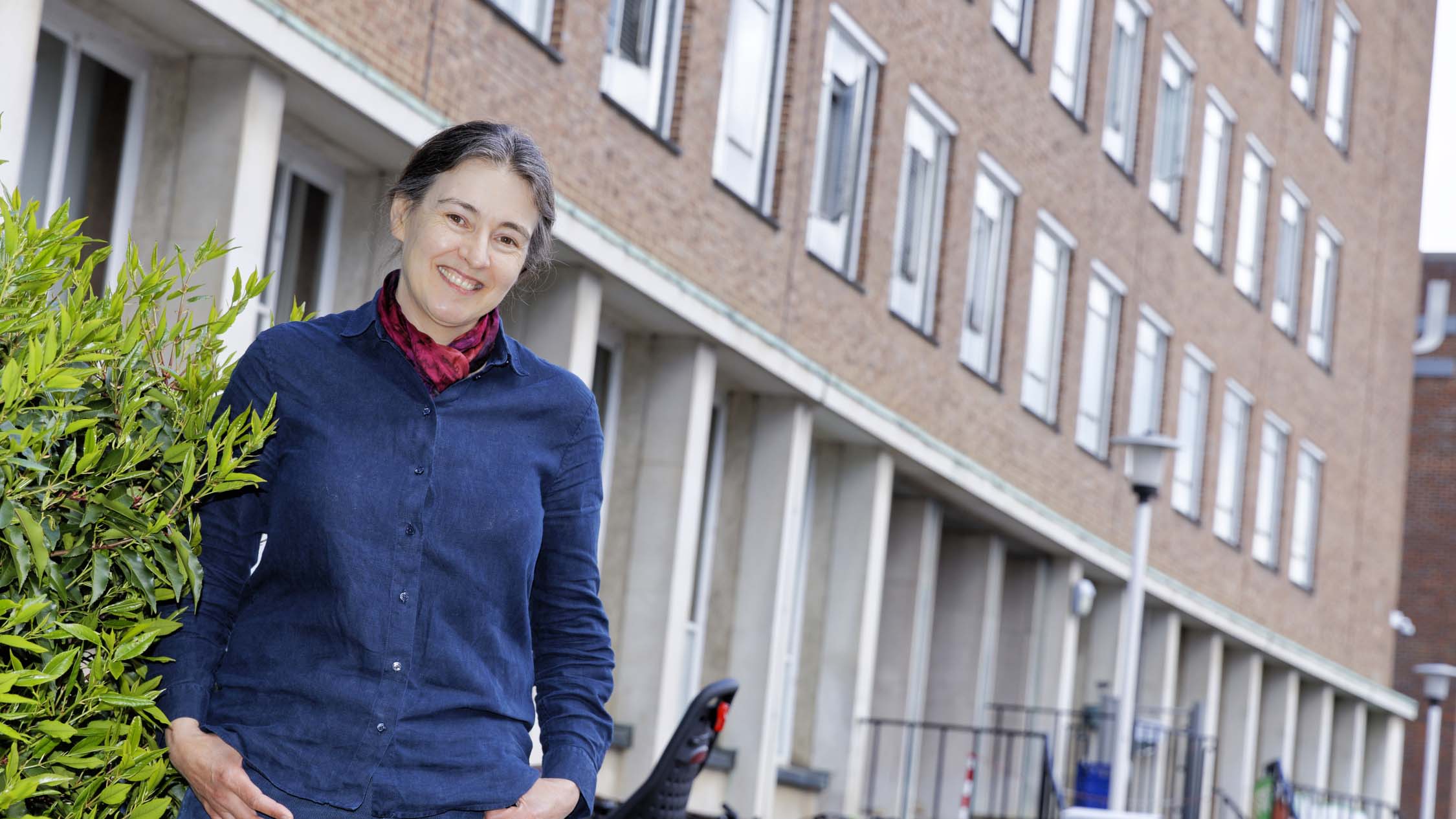What does it take to make a better battery?
Cambridge researchers are working to solve one of technology’s biggest puzzles: how to build next-generation batteries that could power a green revolution.

A better battery could make all the difference. So what’s holding up progress?
Like many of us, when I wake up I reach for the phone on my bedside table and begin scrolling through Twitter, Instagram, email and news apps. I listen to streamed music as I get ready for work and podcasts during my commute. By the time I reach the office, my phone already needs a boost. It’s not even 9am.
It’s a modern miracle that we have computers in our pockets more powerful than those that supported the moon landings. But, despite the fact that the transistors inside our phones and laptops have been getting smaller and faster every year, the batteries that power them have not.
The key to making electronics portable – and powering a sea change in how we communicate and consume information – was the commercialisation of lithium-ion batteries by Sony in 1991. Lithium-ion batteries are rechargeable, so when the device is connected to a charger it restores the battery for another use.
While lithium-ion batteries have undeniable advantages, such as relatively high energy densities and long lifetimes in comparison with other batteries and means of energy storage, they can also overheat or even explode and are relatively expensive to produce.
Additionally, their energy density is nowhere near that of petrol. This limits their market penetration in two major clean technologies: electric vehicles and grid-scale storage for solar power.
Cambridge researchers are working to solve the puzzle of how to build next-generation batteries that could power a green revolution.
Professor Dame Clare Grey is one of the UK’s leading battery researchers, heading up a large research group in Cambridge’s Yusuf Hamied Department of Chemistry. In 2021 she was awarded the Körber European Science Prize, worth one million euros, which honours breakthroughs in the physical or life sciences that have high application potential.
Grey pioneered the optimisation of batteries using NMR (nuclear magnetic resonance) spectroscopy – similar to MRI technology – to enable the inner working of batteries to be monitored while they are operating and without cutting them open. Using such methods, her group studies materials that could be used in next-generation batteries, fuel cells and supercapacitors.
A better battery is one that can store a lot more energy or one that can charge much faster – ideally both. Grey’s group is developing a range of different next-generation batteries, including lithium-air batteries (which use oxidation of lithium and reduction of oxygen to induce a current), sodium batteries, magnesium batteries and redox flow batteries.
A working lithium-air battery, for example, would have a theoretical energy density ten times that of a lithium-ion battery, giving it potential applications in portable electronics, transportation and grid storage. However, although this high energy density would be comparable to that of petrol, the practical energy density achievable is noticeably lower and significant research challenges remain to be addressed.
While Grey works with industrial partners to improve the batteries going into electric cars today, she says the role of universities is to think about entirely new types of batteries, such as the ones she is developing in her lab.
“Universities need to be coming up with answers for ten to 15 years from now – we’re the ones who are best placed to innovate, think creatively and generate radical, new solutions,” she says. “We want to make sure that our work has an impact well beyond today’s batteries.”

In 2019, Grey co-founded Nyobolt with Dr Sai Shivareddy to commercialise ultra-fast charging batteries based on its patented carbon and metal oxide anode materials and other advances. The Cambridge spin-out has proven its fast-charging batteries in an electric sportscar prototype, demonstrating a charge from 10% to 80% in under five minutes, twice the speed of the fastest-charging vehicles currently on the road.
Shivareddy, CEO of Nyobolt, explains: “Nyobolt’s low impedance cells ensure we can offer sustainability, stretching out the battery’s usable life for up to 600,000 miles in the case of our technology demonstrator.”
Dr Sai Shivareddy (credit: Nyobolt)
Dr Sai Shivareddy (credit: Nyobolt)
In addition to developing entirely new types of batteries, a major strand of Grey’s research is the detection of faults. As part of her Professorship funded by the Royal Society, Grey is trying to find ways to locate faults in batteries before they happen.
“Can we detect indicators of faults in batteries before they go wrong? If we can find them, then we could potentially prevent battery safety issues. In addition, we want to explore whether a car battery that’s reached the end of its life could have a second life on the grid, for example. If we could work out, in real time, what causes the battery to degrade, we could change the way we use the battery, ensuring it lasts longer,” she says.
“The more we know about the state of health of a battery, the more valuable that battery becomes. Both strategies – increasing battery life and finding a second use – lead to cheaper batteries.”
Grey is also heavily involved with the Faraday Institution, the UK’s independent institute for electrochemical energy storage research, early-stage commercialisation, market analysis and skills development. She is co-leader of one of 10 major research projects. The project involves eight other university and eight industry partners and is examining how environmental and internal battery stresses (such as high temperatures and charging rates) damage electric car batteries over time. The results will be a crucial step towards making batteries of the future have longer life.
“When you think about other electronic devices, you’re generally only thinking about one material, which is silicon,” says Professor Siân Dutton at Cambridge’s Cavendish Laboratory in the Department of Physics, and who is also working on the Faraday Institution project.
“But batteries are much more complex because you’ve got multiple materials to work with, plus all the packaging, and you’ve got to think about how all these components interact with each other and with whatever device you’re putting the battery into.”
Professor Siân Dutton
Professor Siân Dutton
Among other projects, Dutton’s research group is investigating the possibility of a battery electrolyte that is solid instead of liquid. One of the primary safety concerns with lithium-ion batteries is the formation of dendrites – spindly metal fibres that make a battery short-circuit, potentially causing the battery to catch fire or even explode.
“If the electrolyte is solid, however, you may still get dendrites, but the batteries are far less likely to explode,” she says, adding: “It’s important for universities to look at unconventional battery materials like the ones we’re investigating. If everyone moves in the same direction, we won’t get the real change we need.”
Meanwhile, in the University of Cambridge’s Department of Materials Science & Metallurgy, researchers in Professor Manish Chhowalla’s laboratory have been studying the materials used in battery cathodes. Their aim is to make lithium-sulphur (Li-S) batteries lighter for applications in the aerospace industry. Working with nine other universities with funding from the Faraday Institution, they have developed a new cathode material that uses two-dimensional nanosheets of molybdenum disulfide instead of carbon.
“Li-S batteries possess high energy density and are lightweight, which makes them potentially deployable in short-range commercial flights,” explains Chhowalla. “Their other advantage is the electrodes of Li-S batteries don’t contain expensive transition metals like cobalt that have social and environmental issues associated with their mining.”
“To achieve climate goals and transition away from fossil fuels, we need to be thinking about how to solve these problems now. Fortunately, basic research into new battery technologies is already in full swing.”

“Imagine a world where you don’t worry about battery charging times,” says Grey. “It isn’t just about the convenience: rapid response on the grid is critical for grid stability. If you could charge a car battery almost immediately, you remove the inconvenience of the longer journey, or the difficulty of charging if you live in a city – and it allows you to use a smaller battery – which is the simplest way to reduce cost and be more sustainable.”
The prospect of an electric car with a range of 1,000 miles, or being able to store solar and wind generated electricity for the weeks and months with no sun or wind may all be some years away, but says Grey:
“We’re continuing to push new materials and new methods because, without them, research fields stagnate. To achieve climate goals and transition away from fossil fuels, we need to be thinking about how to solve these problems now. Fortunately, basic research into new battery technologies is already in full swing.”

Updated: 9 October 2024
Originally published: 11 February 2019
Words: Sarah Collins
Updates and design: Louise Walsh
Banner image: Just_Super/Getty Images
The text in this work is licensed under a Creative Commons Attribution-NonCommercial-ShareAlike 4.0 International License


